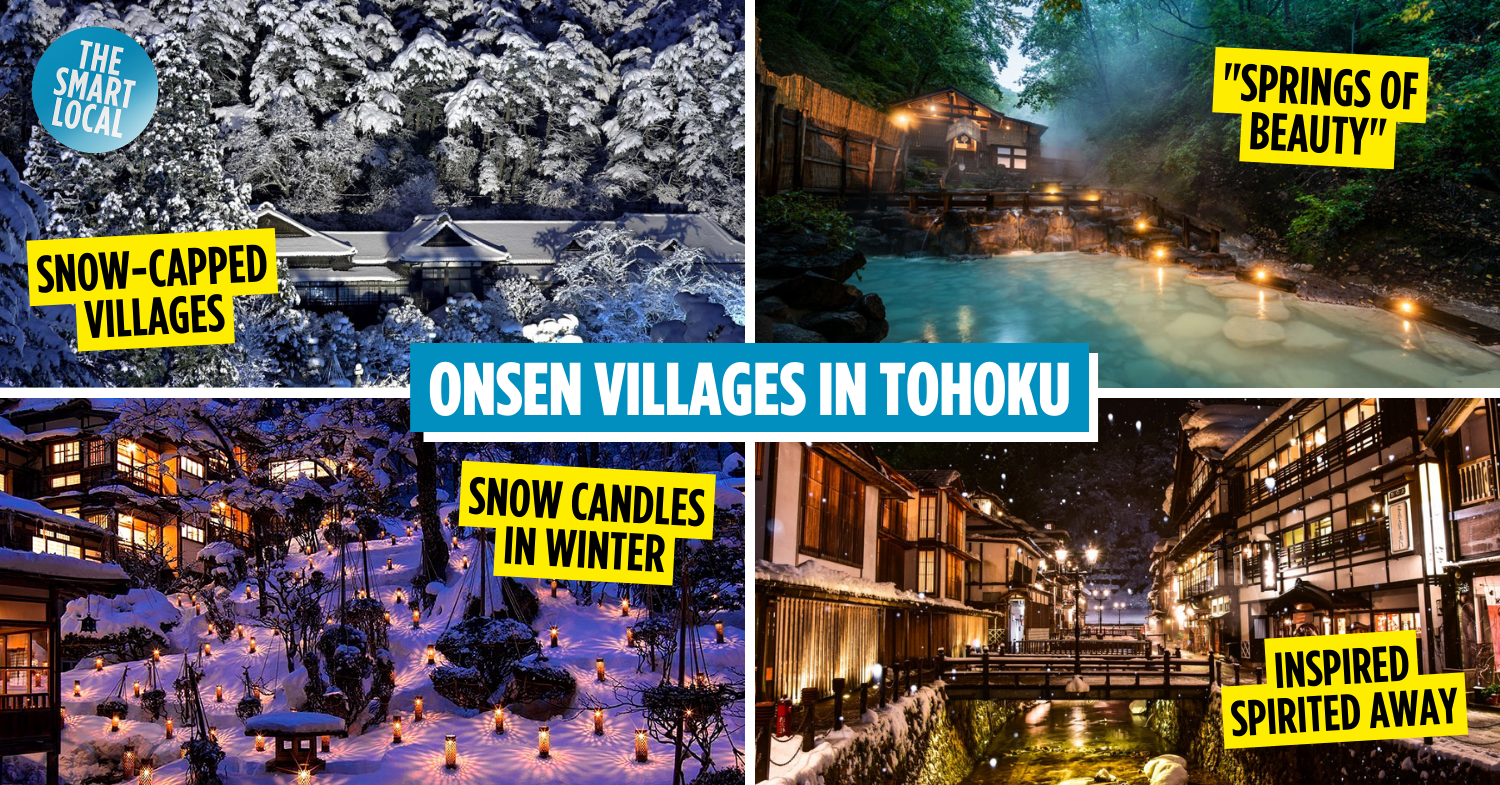Tohoku onsen villages
Tohoku is the northernmost tip of Japan’s main island, right beneath Hokkaido. Home to half of Japan’s 10 largest prefectures, Tohoku offers dramatic landscapes from mountains to lakes to hilly countrysides, and history-rich towns in-between. This guide will take you through hidden treasures in Tohoku – its onsen villages that warm you up with traditional hospitality and breathtaking sceneries in winter.
Table of Contents
1. Ginzan Onsen – Yamagata Prefecture
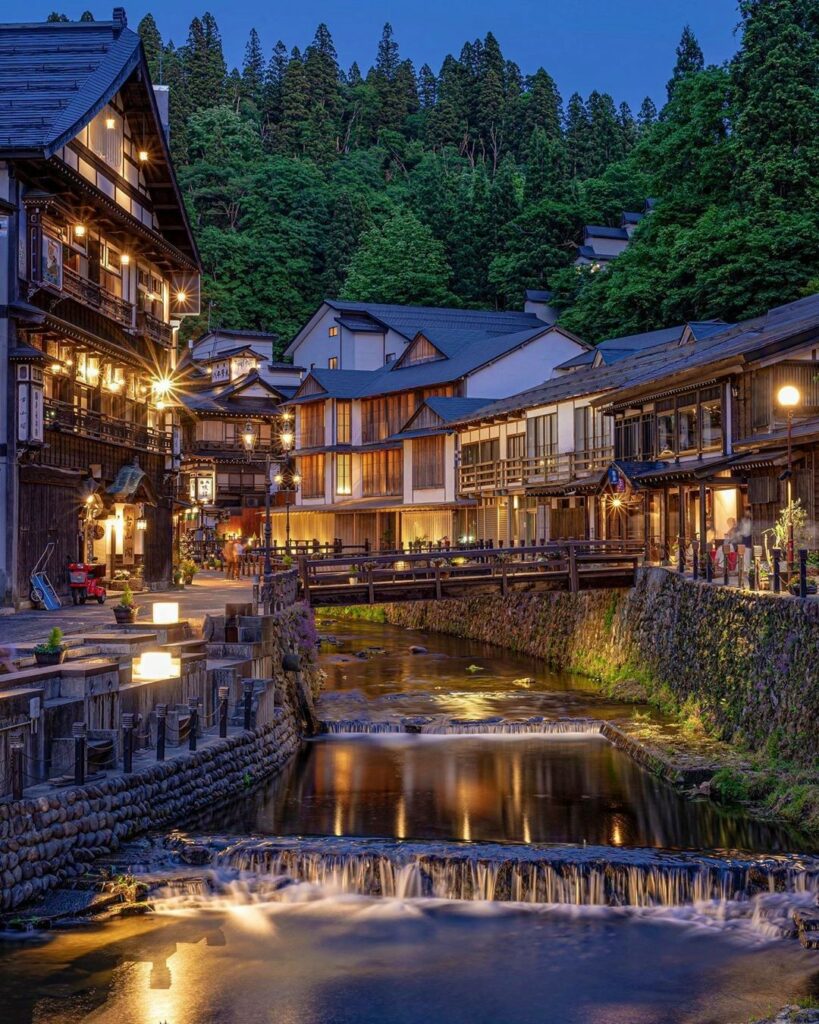
Image adapted from: @ginzanonsen
Originally a silver mine more than 500 years ago, Ginzan Onsen is now known as one of Japan’s prettiest onsen towns. It looks magical in the evenings when the traditional ryokan lights up along the river. Gas lights illuminate the pathways and bridges, echoing a bygone era.
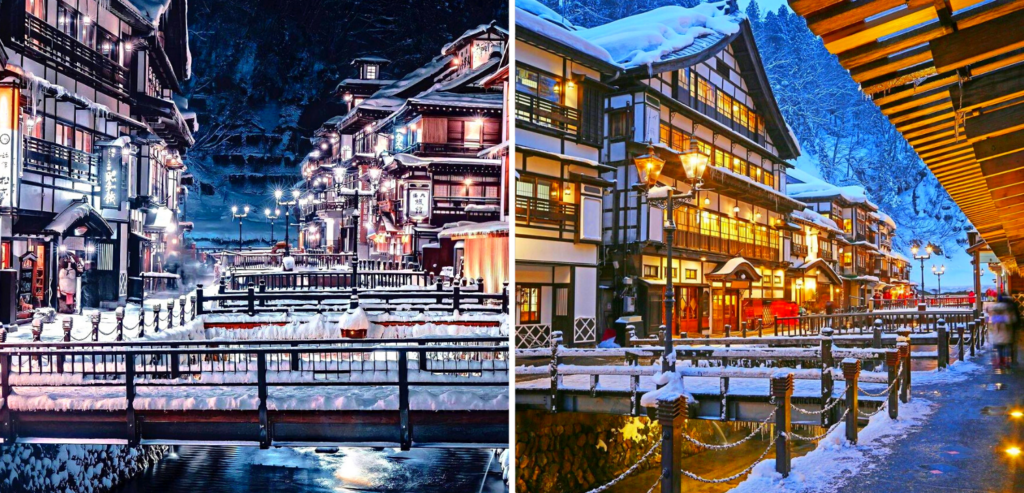
Image adapted from: @ginzanonsen, @ginzanonsen
In winter, heavy snow falls upon the roofs, elevating its historic charm. It’s no wonder that this town is featured in so many romance dramas and served as an inspiration for Yubaba’s bathhouse in Spirited Away.

Image credit: Tohoku Tourism Promotion Organization
Ginza Onsen’s 3- and 4-storey Taisho-era buildings feature exposed woodwork and white plaster walls that evoke a sense of nostalgia.
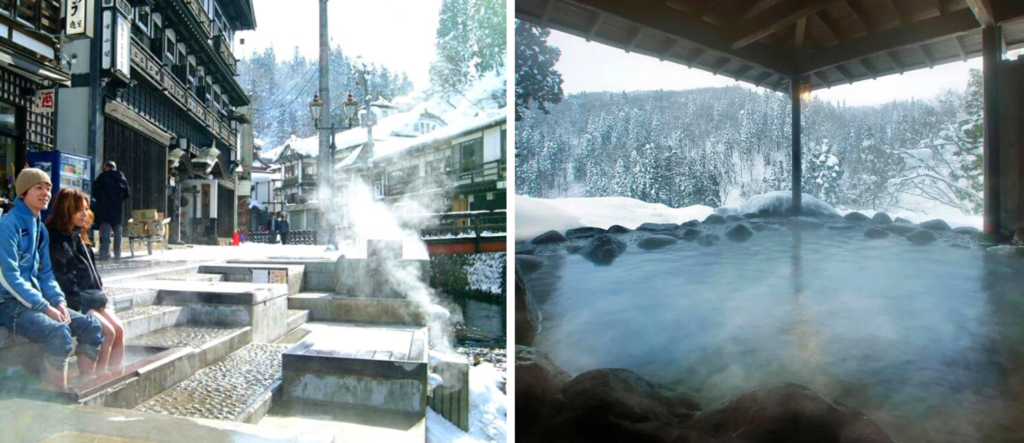
(Left to right) Relaxing baths at Warashiyu and Takimikan.
Image adapted from: TISORY, Asian Wanderlust
The town centre houses 2 public baths – Shiroganeyu and Takimikan – and Warashiyu, a free foot bath. Many ryokan also welcome non-staying guests to dip in their historic indoor baths during the daytime.
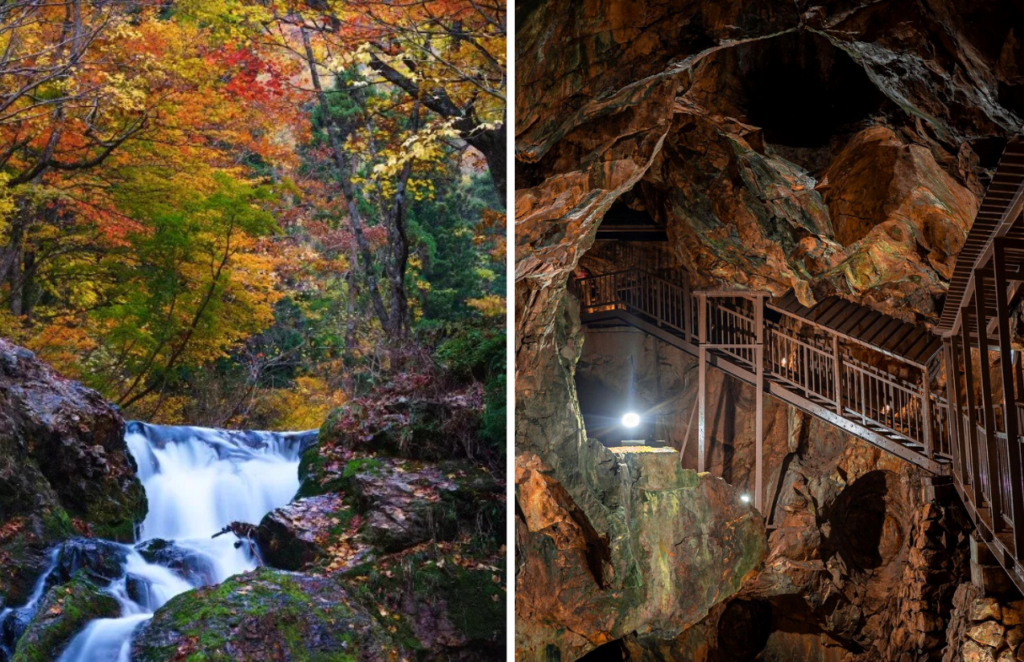
Image adapted from: Asian Wanderlust, @c_in_london
If you venture further out for a scenic walk at Shirogane Park, you’ll catch the 22-metre Shirogane-no-Taki, which feeds into the waterways of the town. Visitors can also explore 20 metres into a well-lit tunnel – a legacy of Ginzan Onsen’s mining past.
2. Zaō Onsen – Yamagata Prefecture
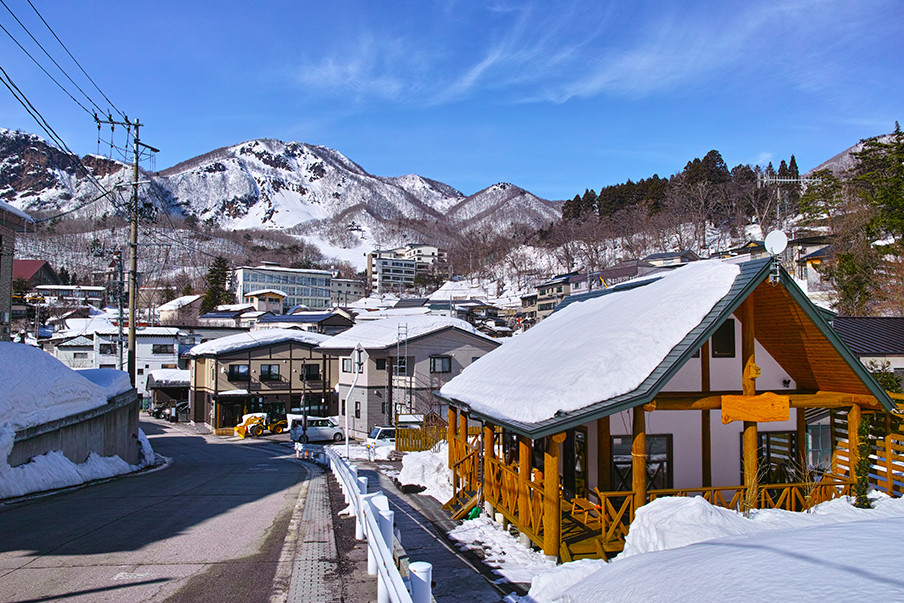
Image credit: Japan Airlines
Zaō Onsen is located 880m above sea level on the slopes of the volcanic Mount Zaō, a range of volcanic mountains spanning across Miyagi and Yamagata Prefecture with emerald crater lakes.
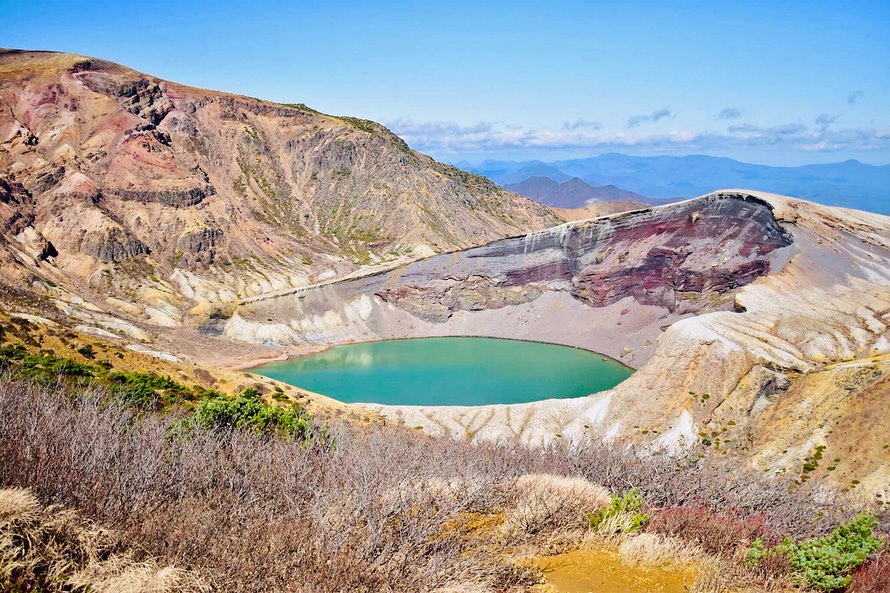
Image credit: @y.u.k.i.n.y.a.n
The steep snowy inclines boast one of Japan’s most popular ski resorts, and are visited by hoards of “snow monsters” in winter.
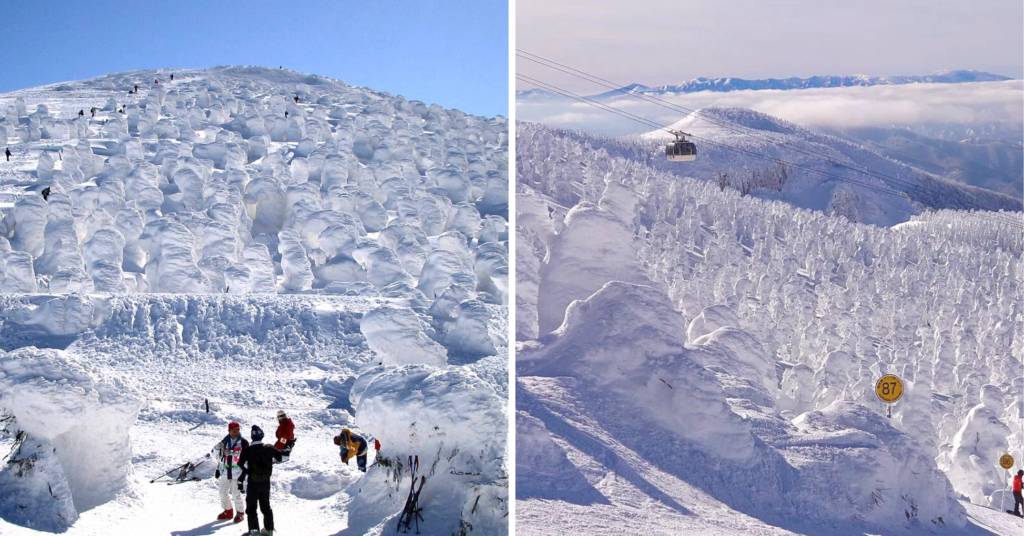
Image adapted from: @hide353535, @hide353535
But fear not – these “snow monsters” are just trees cloaked in ice and frozen fog on the mountains, forming a unique landscape.
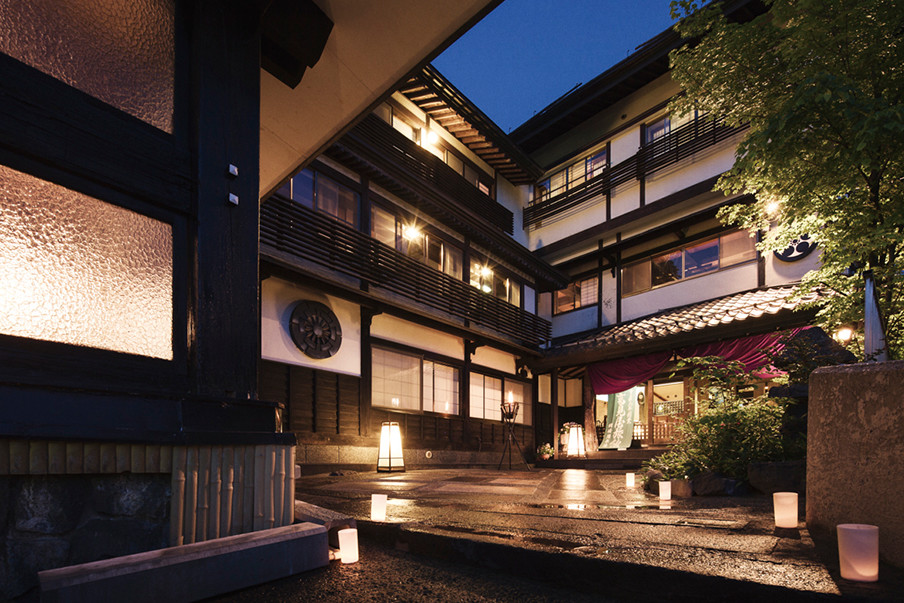
Image credit: Japan Airlines
After a day of skiing, take a peaceful dip at one of Zaō Onsen’s many public bathhouses. You’ll be spoilt for choice from traditional community baths – Kamiyu, Shimoyu, and Kawarayu – to modern establishments with various pools both indoors and outdoors.
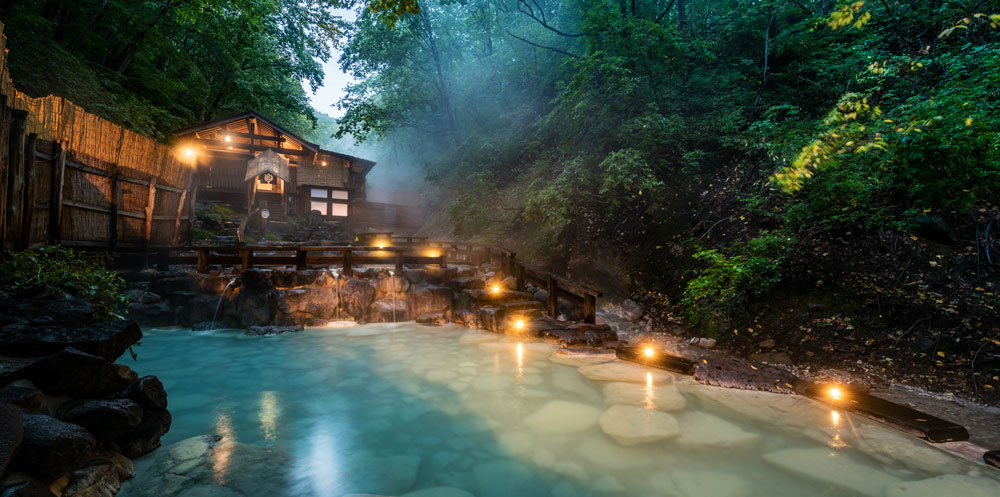
Image credit: Zao Onsen Ski Resort
With a pH value close to 1, the sulfuric waters of Zaō Onsen are among the most acidic in Japan. This acidic quality is said to rejuvenate the skin and blood vessels, and that’s why the onsen here are also called the “Springs of Beauty”.
That said, we do not recommend soaking in this onsen for too long. For context, the pH value of lemon juice hovers around 2 and stomach acid is around pH1, which gives you a rough idea of how acidic the hot spring can be.
3. Higashiyama Onsen – Fukushima Prefecture
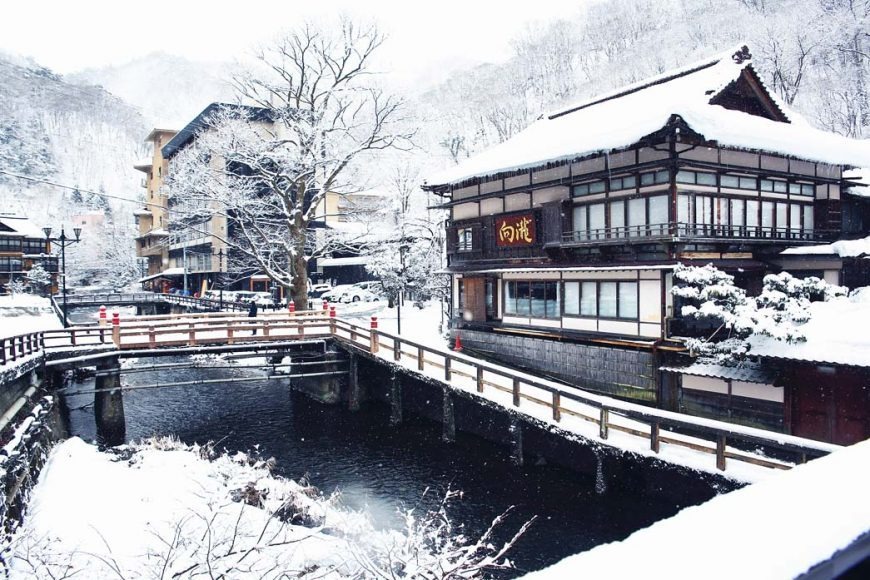
Image credit: Tohoku Tourism Promotion Organization
According to legends, Higashiyama Onsen was discovered 1,300 years ago by Buddhist priest Gyoki while he was following a 3-legged bird, which is an auspicious omen. The waters here are smooth, colourless, and odourless, making for a tranquil dip.
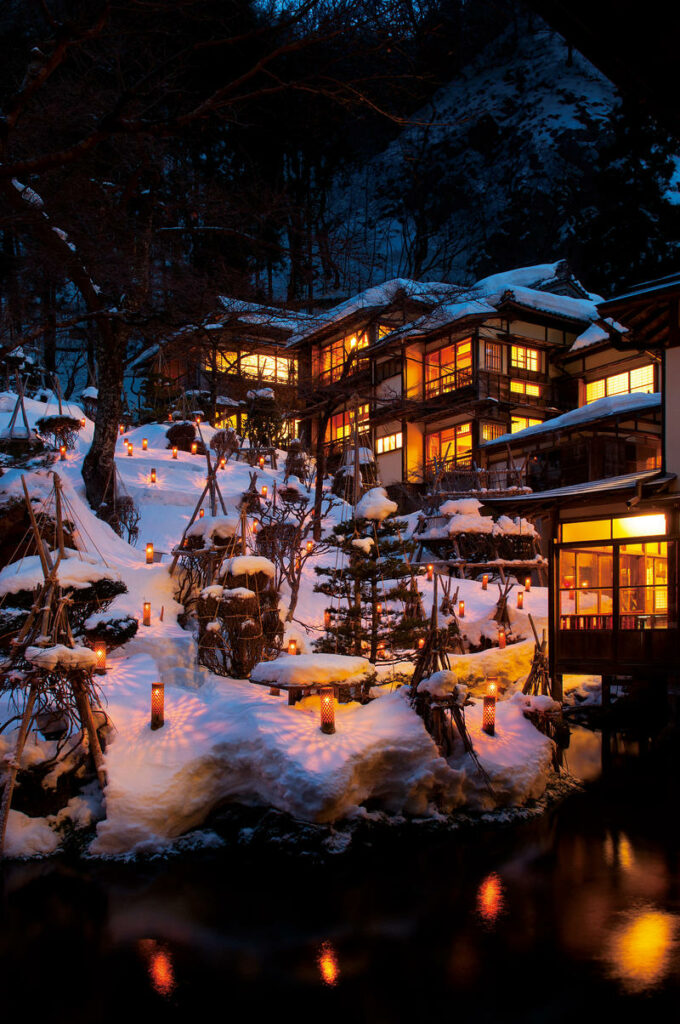
Image credit: Kingdom of Winter Trip Tohoku
The most iconic guesthouse is Mukaitaki, a registered tangible cultural property that’s been in operation since the Edo period. 24 guest rooms, each with a unique design, are housed in a traditional wooden building that is surrounded by enchanting snow lanterns in winter.
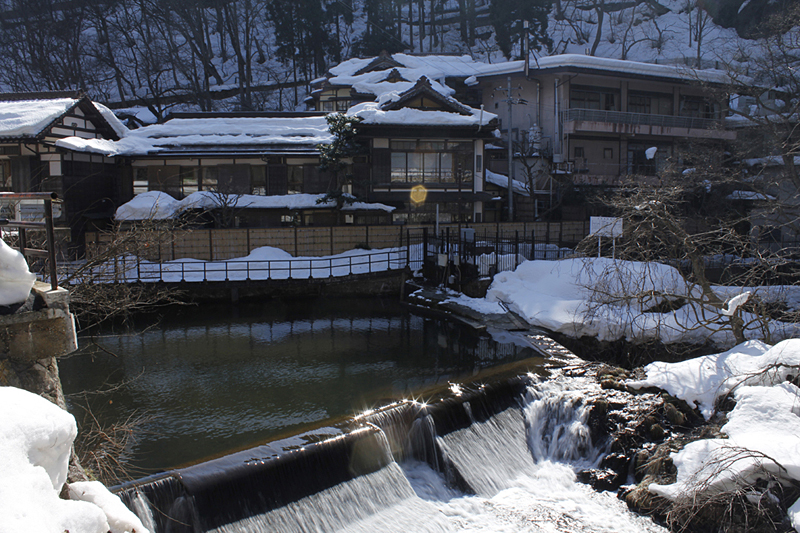
Image credit: Samurai city Aizuwakamatsu
This hot spring has been favoured throughout the ages by famous figures including Toshizo Hijikata, the Vice Captain of the Shinsengumi; Hirobumi Ito, the 1st Prime Minister of Japan; and Akiko Yosano, Meiji era’s pioneering feminist poet.
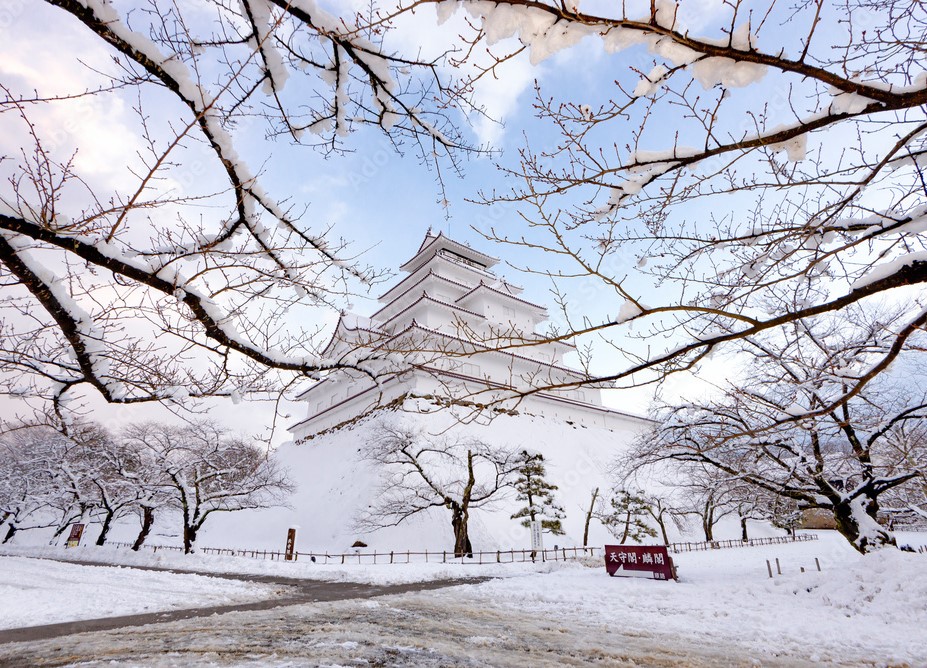
Image adapted from: iamdoctoregg
Higashiyama Onsen is located in Aizu-Wakamatsu City, which was one of the last strongholds of the samurai at the end of the 19th century. Connected by the Aizu Loop Bus are numerous sights that recall the days of the Shinsengumi, the most famous being the Tsuruga Castle. In winter, it stands proudly and serenely amongst the snow.
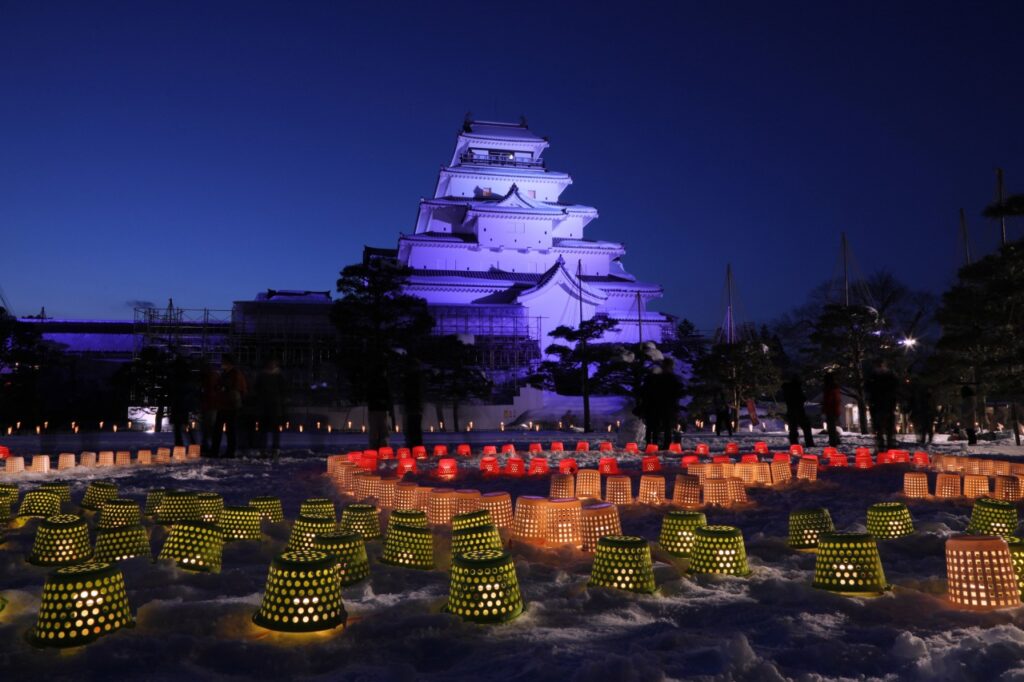
Image credit: Tohoku Tourism Promotion Organization
During the Aizu Erosoku Festival, stunning displays of hand-painted lanterns illuminate the castle’s grounds. You’ll find these snow lanterns at similar culturally significant places, including Higashiyama Onsen and Amidaji Temple.
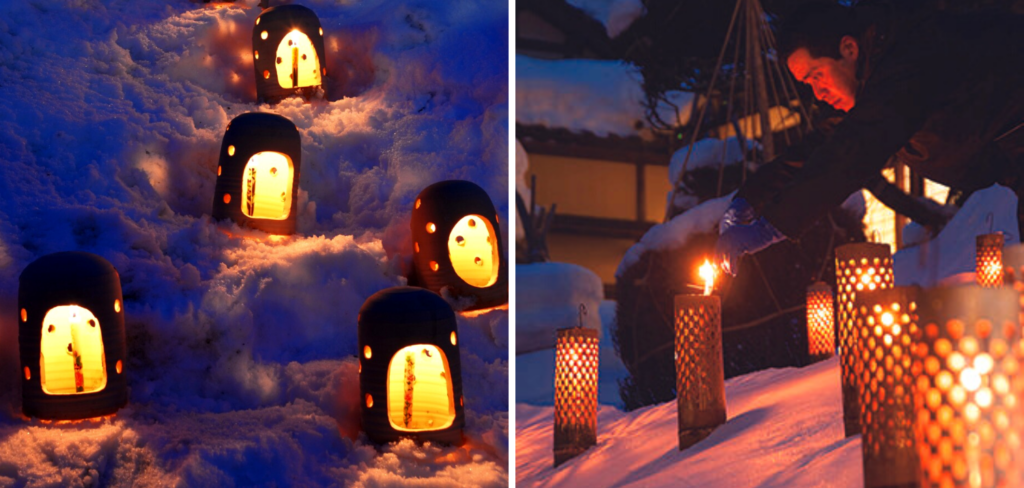
Image adapted from: Tohoku Tourism Promotion Organization, Kingdom of Winter Trip Tohoku
Till this day, Aizu-Wakamatsu City retains its historical touch thanks to well-preserved Taisho period streets such as Nanukamachi-dori.
4. Naruko Onsenkyō – Miyagi Prefecture

Image credit: Naruko Onsen Tourism Association
As the meeting point of 400 different mineral-rich water sources, Naruko Onsenkyō has been a hot spring destination for more than a century since its discovery in 837.
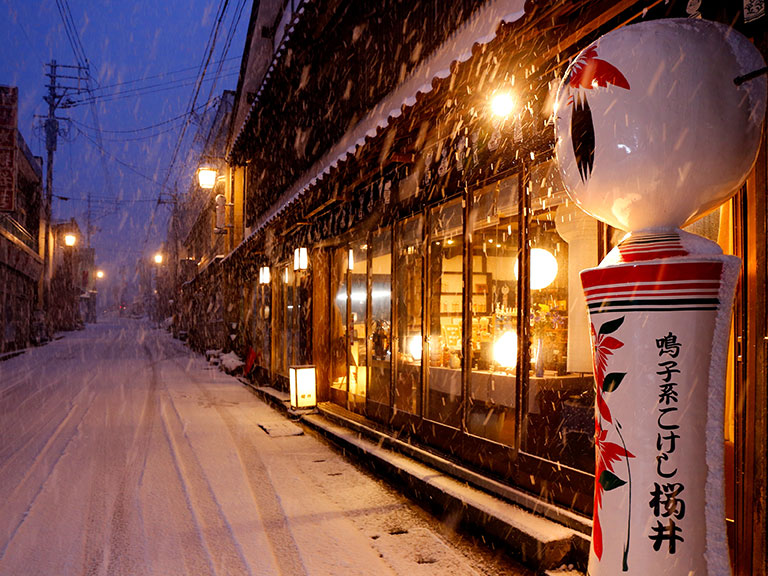
Image credit: Naruko Onsen Tourism Association
Naruko Onsenkyō has welcomed famous historical figures such as Matsuo Basho, one of Japan’s most renowned haiku poets, and retains its old town vibes till today.
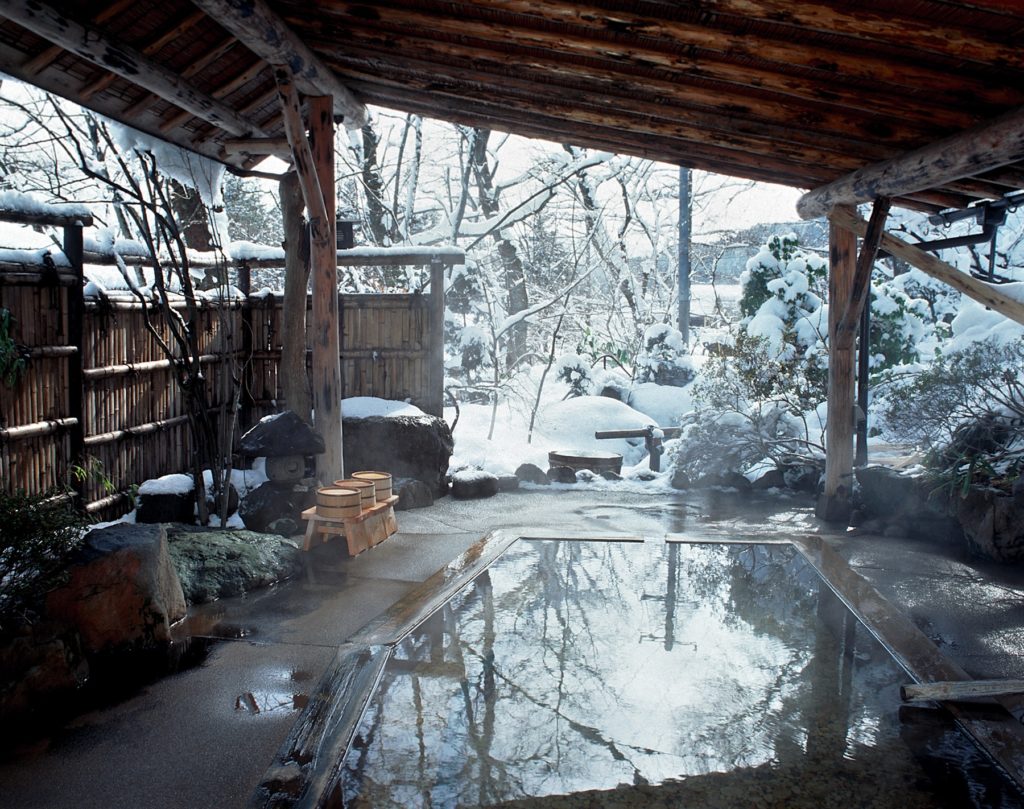
Image credit: Japan National Tourism Organization
There are 5 hot springs: Naruko Onsen, Higashi Naruko Onsen, Kawatabi Onsen, Nakayamadaira Onsen, Onikobe Onsen. Each offers different views of the village and unique bath experiences.
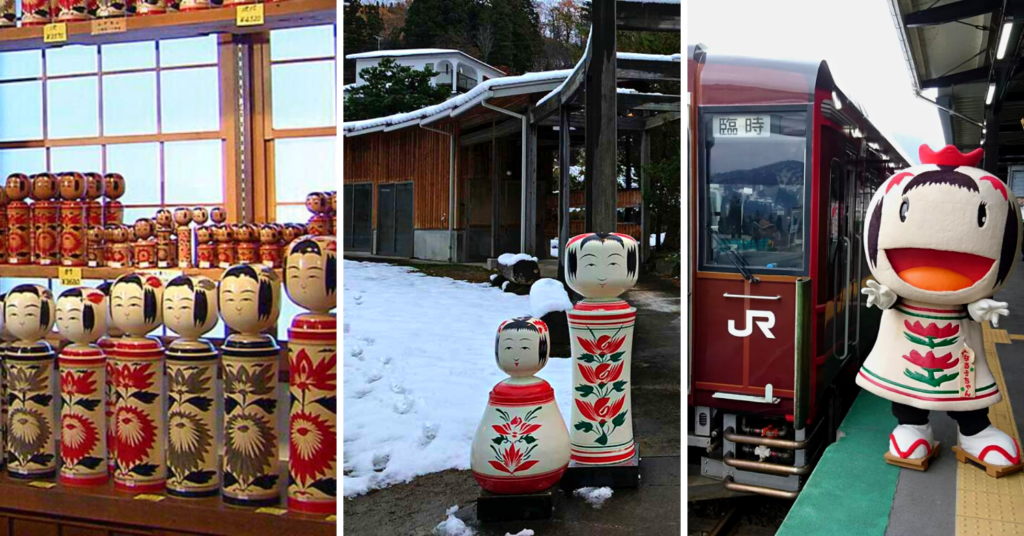
Image adapted from: ANA, COKOGURI, @welcome.naruko
There are lots of woodcraft and lacquerware specific to Naruko. Of these, you’ll find Naruko’s emblematic kokeshi (こけし; simple Japanese wooden dolls) everywhere: in souvenir shops, as child-size statues, and even as walking mascots.
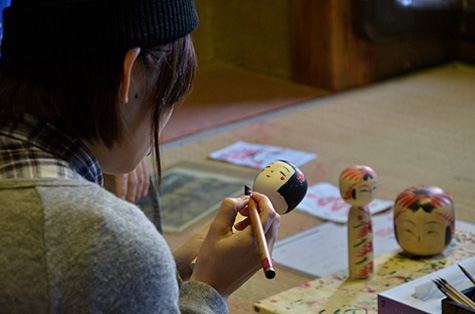
Image credit: Kokeshi Museum
They’re also displayed in the Japan Kokeshi Museum, which showcases regional differences in the dolls’ shapes and designs. Naruko’s kokeshi dolls are still handmade by about 50 dedicated craftsmen and you can try your hand at designing your own at the museum.
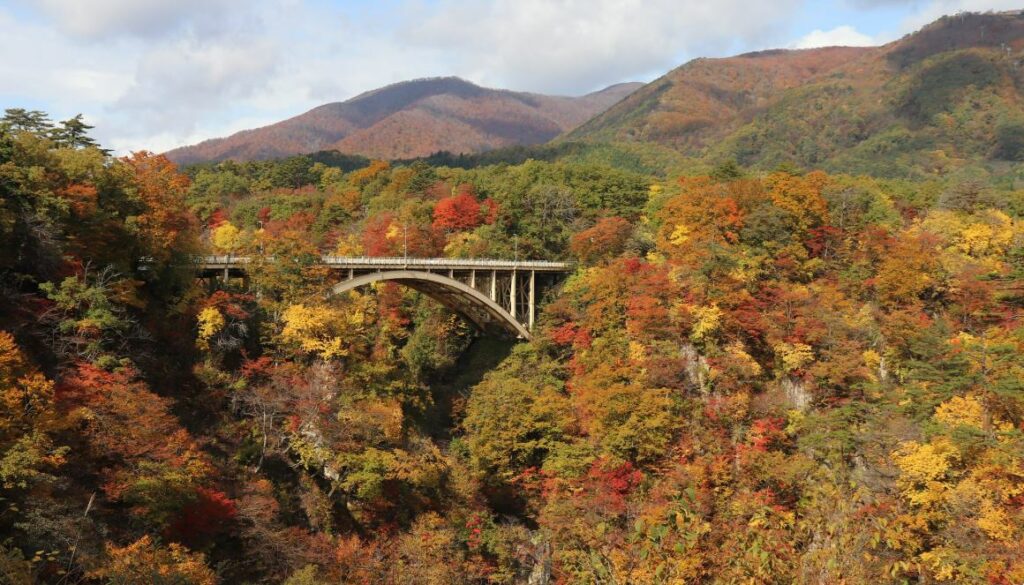
Image credit: Japan National Tourism Organization
If you’re here at the tail-end of autumn, head over to the Naruko Gorge for one of Miyagi Prefecture’s best momiji-gari (紅葉狩り; autumn leaf-hunting) spots. From the Ofukazawa Bridge, you’ll see mountains ablaze with the warm colours of fall. The bridge also marks the beginning of the Naruko Gorge Walking Trail.
5. Akiu Onsen – Miyagi Prefecture
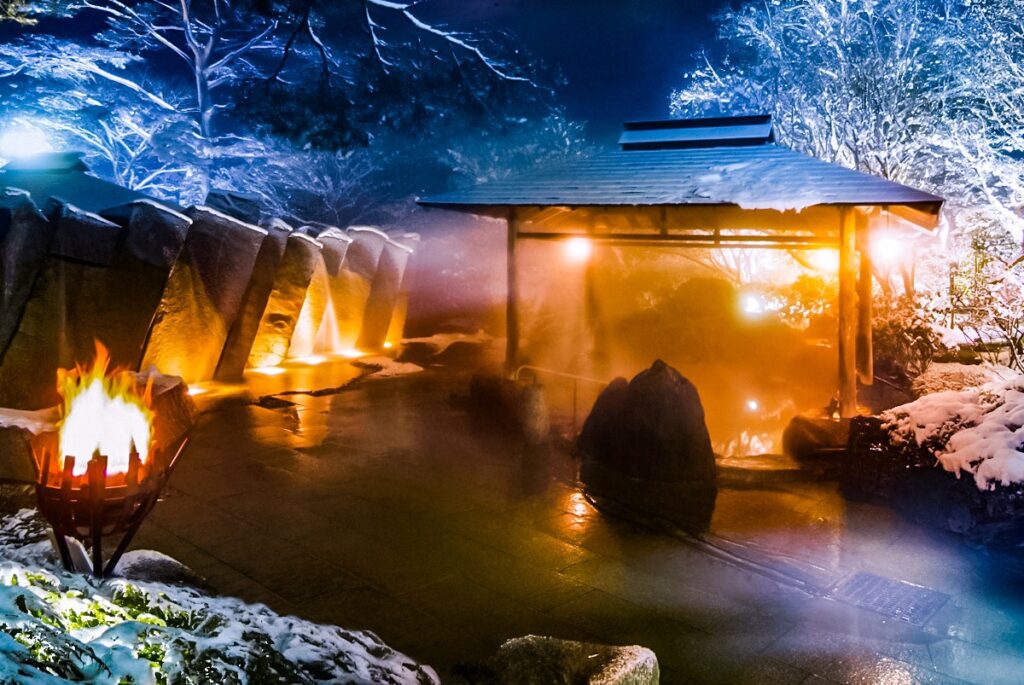
Image credit: Agoda Company Pte. Ltd.
Akiu Onsen is a historical village that has served numerous feudal lords, including Data Masamune. It’s also well-loved by the imperial family.
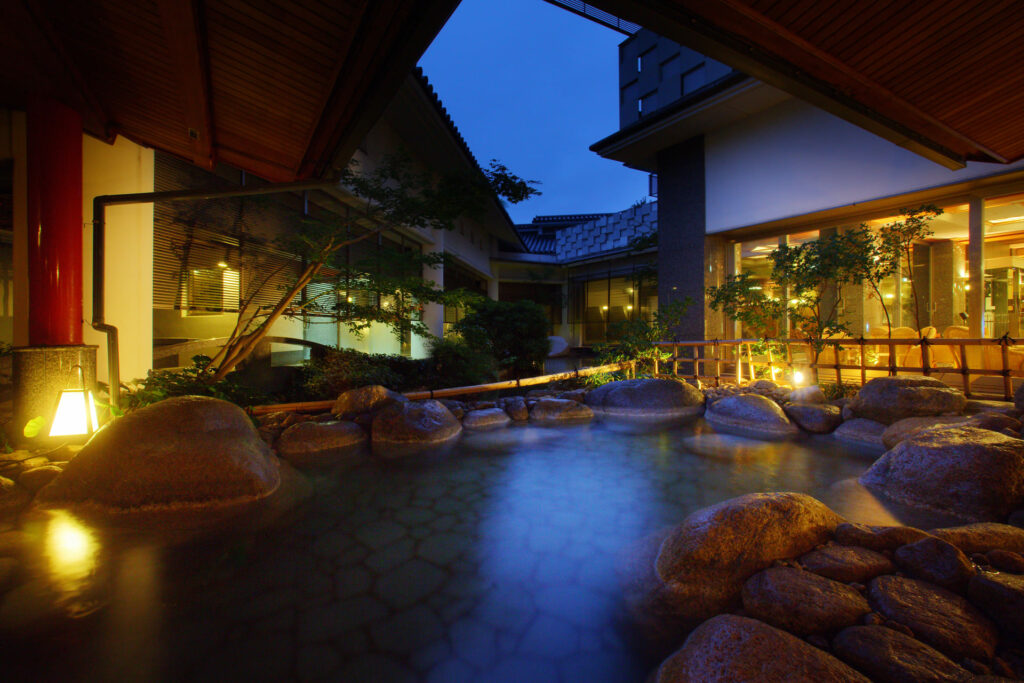
Image credit: City of Sendai
Legend has it that the waters here cured Emperor Kinmei’s skin cancer in the 6th century, and Emperor Juntoku bestowed the title of Nihon San Miyu (日本三御湯; the three honorable onsen) to Akiu Onsen in the 13th century.
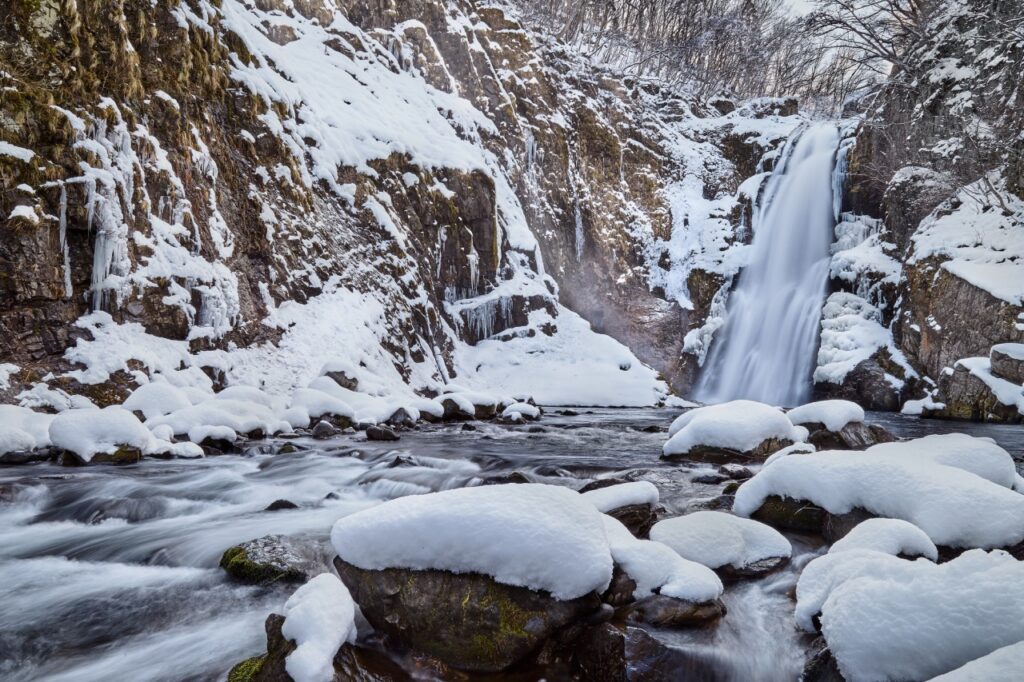
Image credit: Tohoku Tourism Promotion Organization
Just a 20-minute bus ride from the information centre, you’ll find the 55m-high, 6m-wide Akiu Otaki Falls. It remains spectacular in winter, when the waters freeze to a dramatic stop in the air.
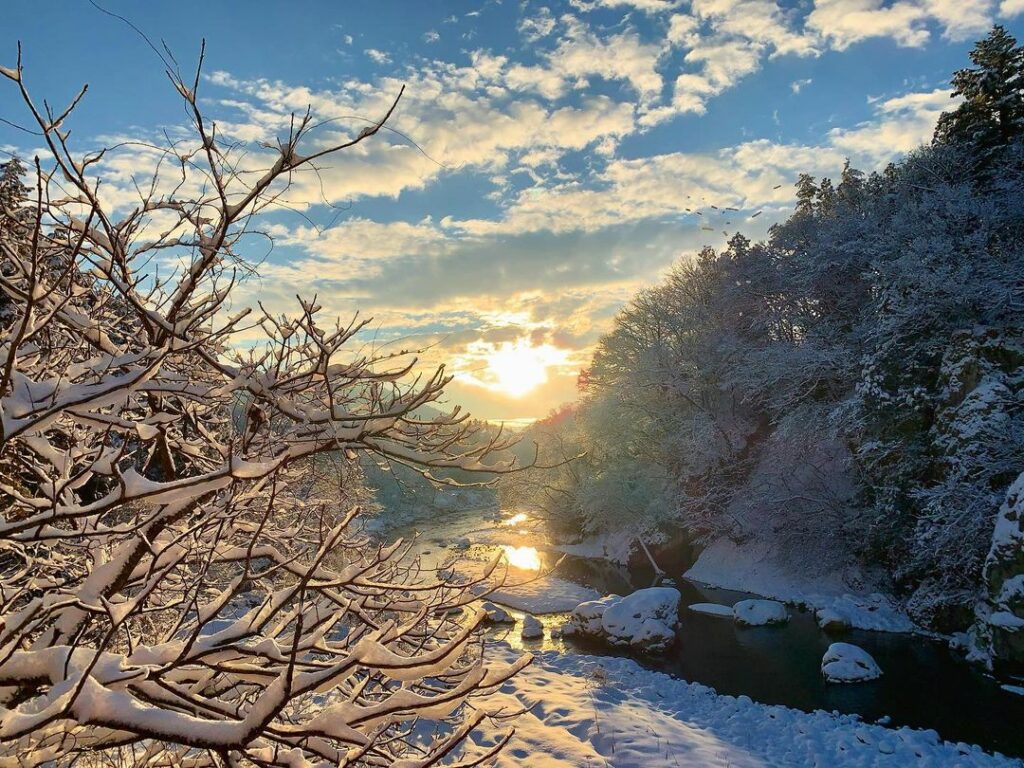
Image credit: @hotelkiyomizu
You can even admire the waterfall up close by walking along the trail to its base.
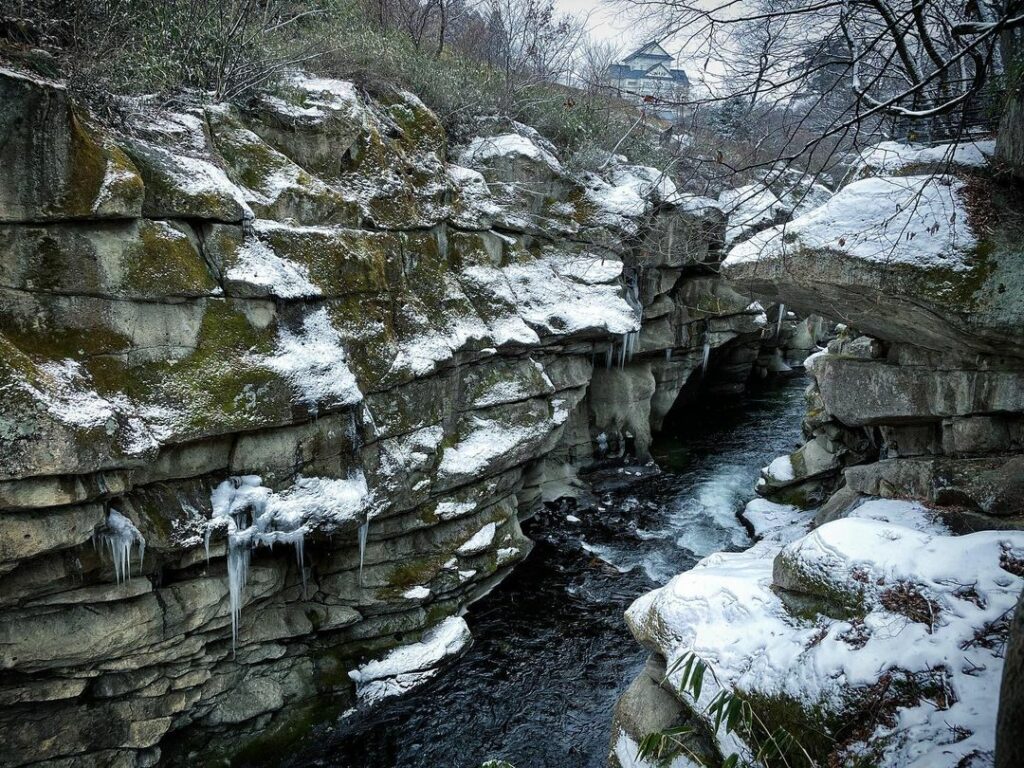
Image credit: @nori_oyoshi
20 minutes away from the village by foot is the Rairai Gorge, which features a 1km-long walkway amidst peculiar rock formations.
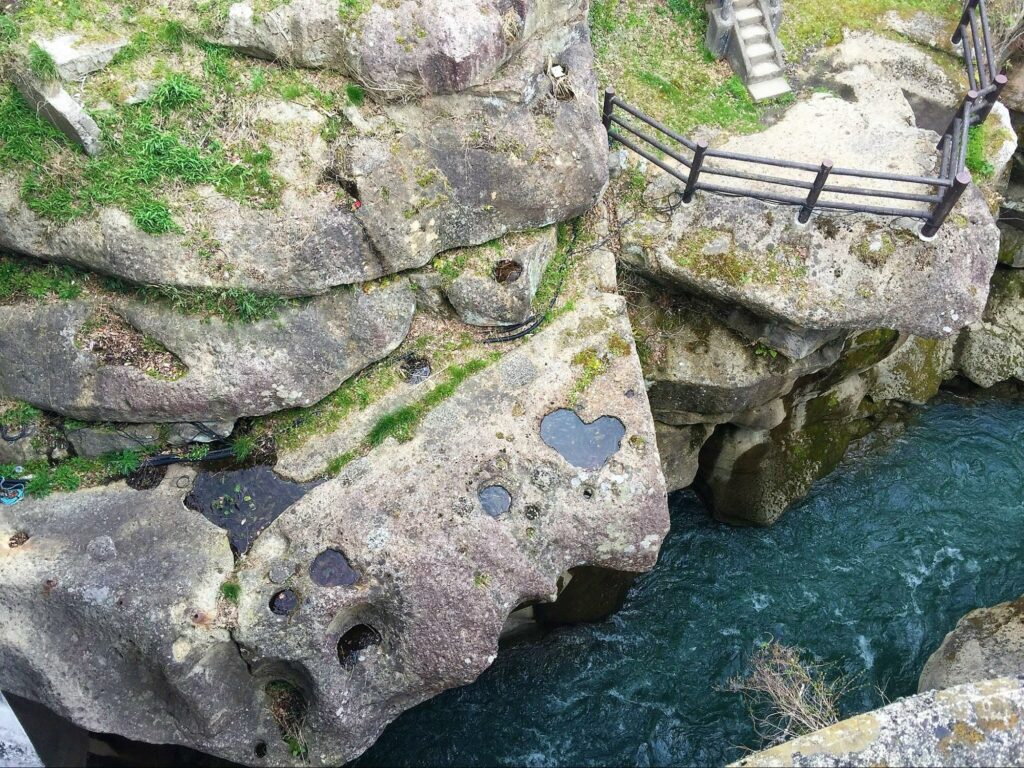
Image adapted from: hiroki t
You’ll arrive at the Nozoki Bridge, where you’ll gain a bird’s eye view of an iconic heart-shaped hole in the rocks that’s nicknamed the Lover’s Sanctuary.
6. Nyūto Onsenkyō – Akita Prefecture
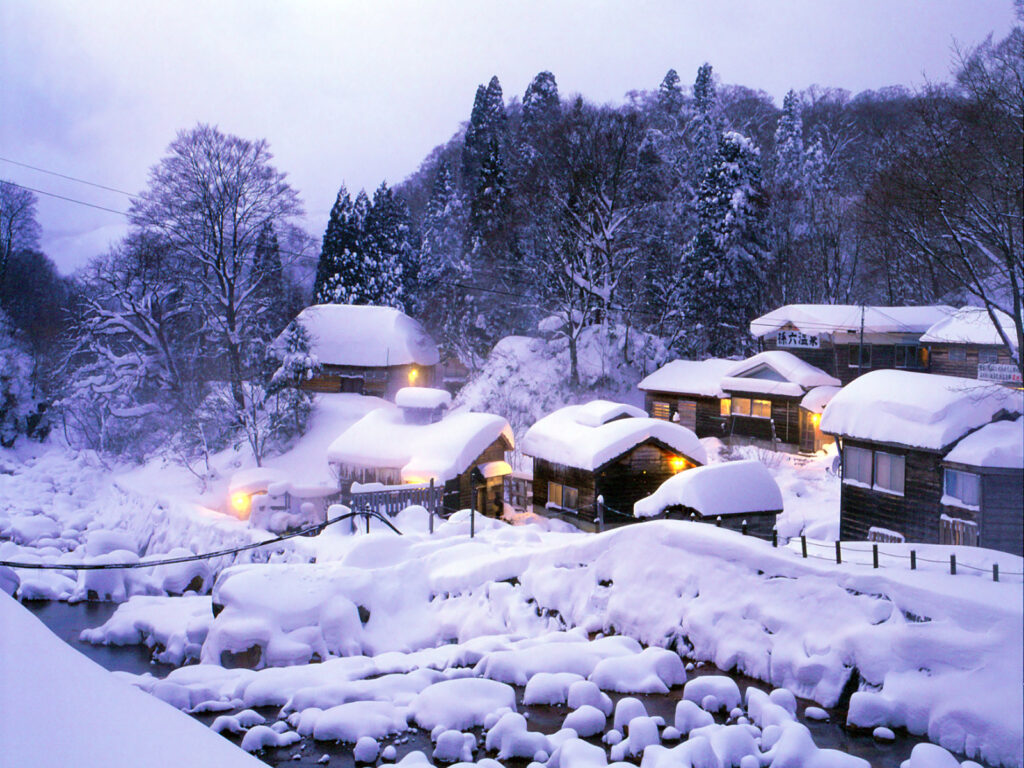
Image credit: Tohoku Tourism Promotion Organization
Interspersed in the forests of Akita’s Towada-Hachimantai National Park is an assortment of 7 onsen that make up Nyūto Onsenkyō.
This rustic village lies in the secluded valley of the Sendachi River and is guarded by Mount Komagatake and Mount Nyūto. While bathing in the milky waters, you can enjoy unique views surrounded by nature.
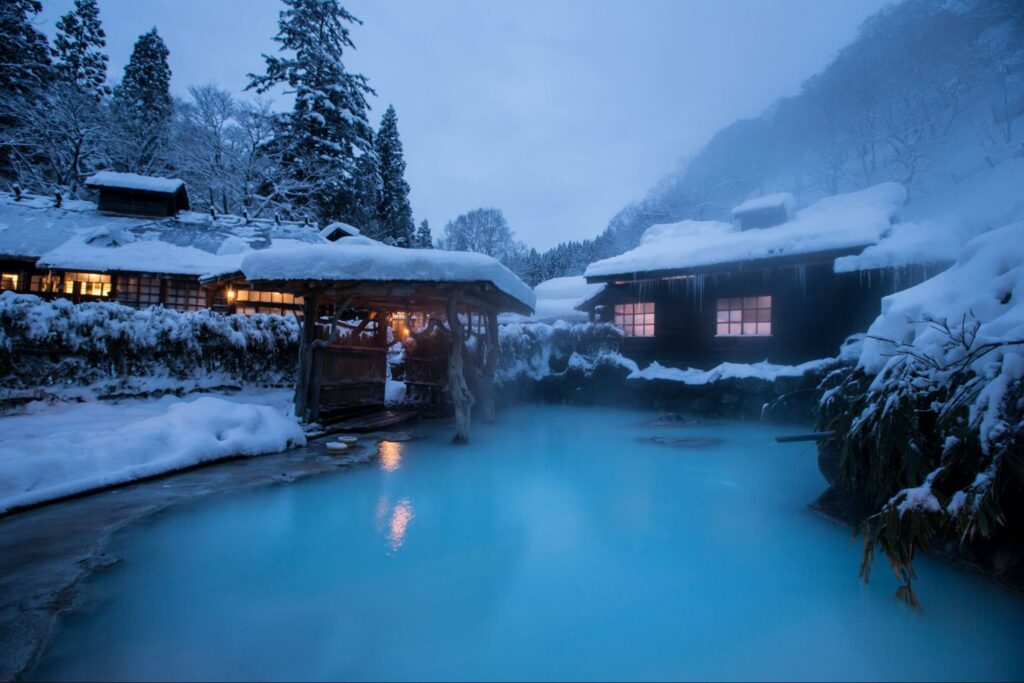
Image credit: RYOKAN STORIES
Tsurunoyu Onsen is the oldest and most historically significant onsen. It preserves the thatched mansion of the samurai honjin (本陣; inn for government officials) from the late Edo period.
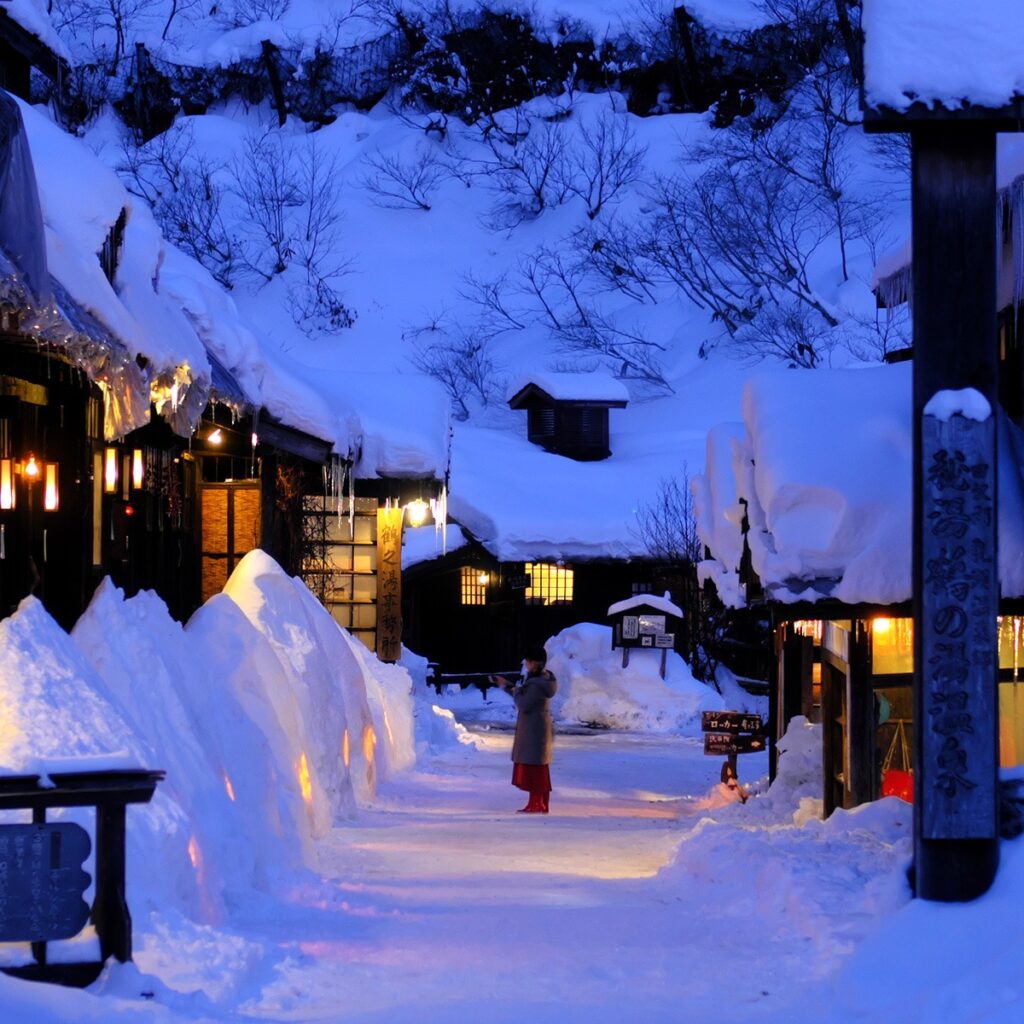
Image credit: Agoda Company Pte. Ltd.
Guests have to cross a suspended bridge to enter the traditional thatch-roofed buildings, outside which a corridor of snow mounds light up beautifully at night.
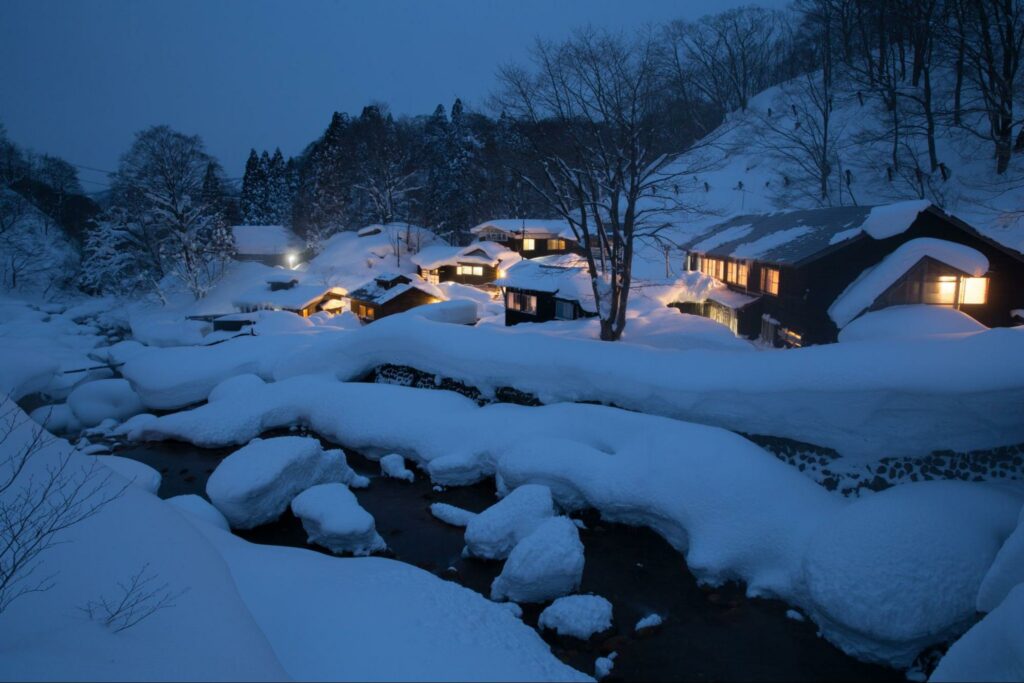
Image credit: RYOKAN STORIES
Another onsen that looks magical at night is Magoroku Onsen, which boasts several baths lining a small stream.
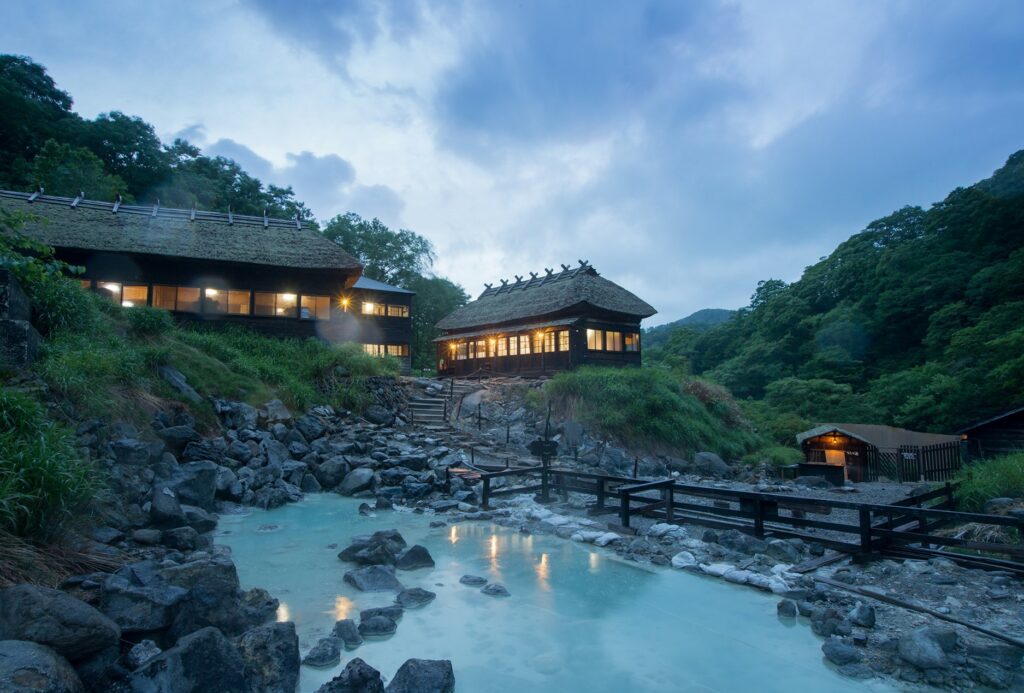
Image adapted from: RYOKAN STORIES
Kuroyu Onsen is situated slightly further uphill from the other onsen. It’s an open-air bath surrounded by groves of Japanese beech as far as the eyes can see. Its name translates to “black bath” because onsen eggs that are boiled here turn black on the outside.
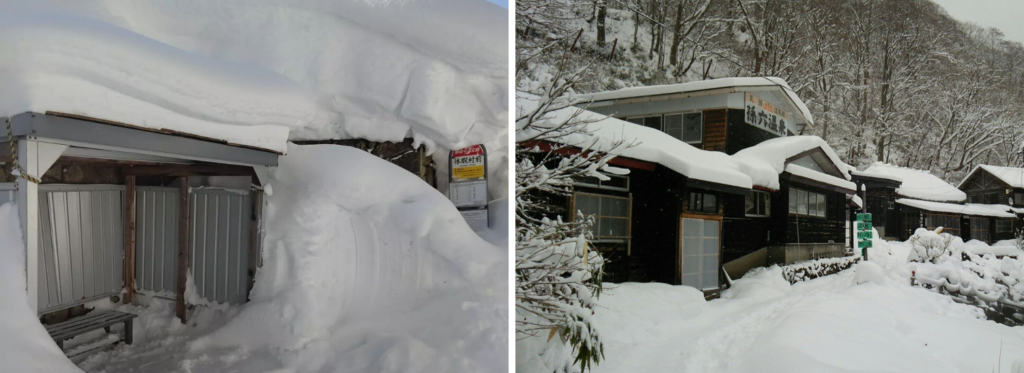
Image adapted from: @saschiharu, 広希
Nyūto Onsenkyō is truly a sight to behold in winter as it lies under a heavy blanket of snow. Stay for a night or 2 to try out all the hot springs and take an unlimited number of rides in the area using the Yumeguri Bus Pass.
7. Hanamaki Onsenkyō – Iwate Prefecture
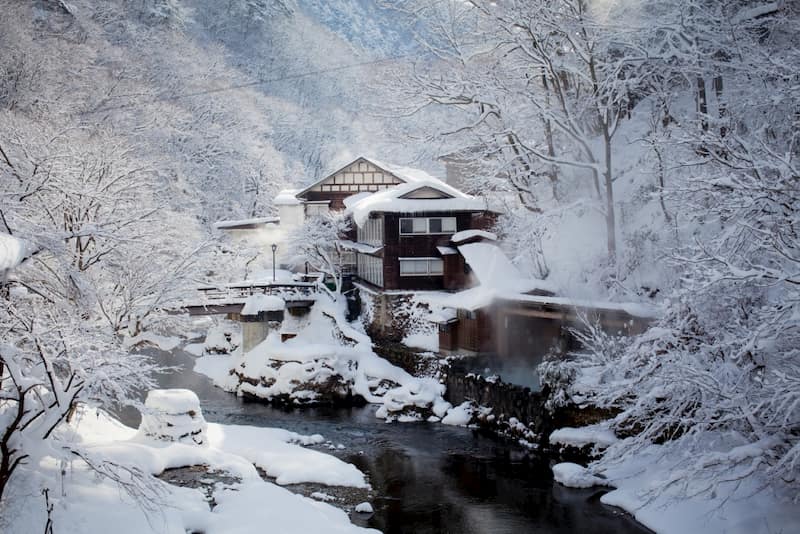
Image credit: SELECTED ONSEN RYOKAN
Hanamaki Onsenkyō wraps up our list with the largest group of onsen. Located in Hanamaki City, it sits by the Dai River and Toyosawa River, which flow between mountains to create a wealth of different onsen experiences.
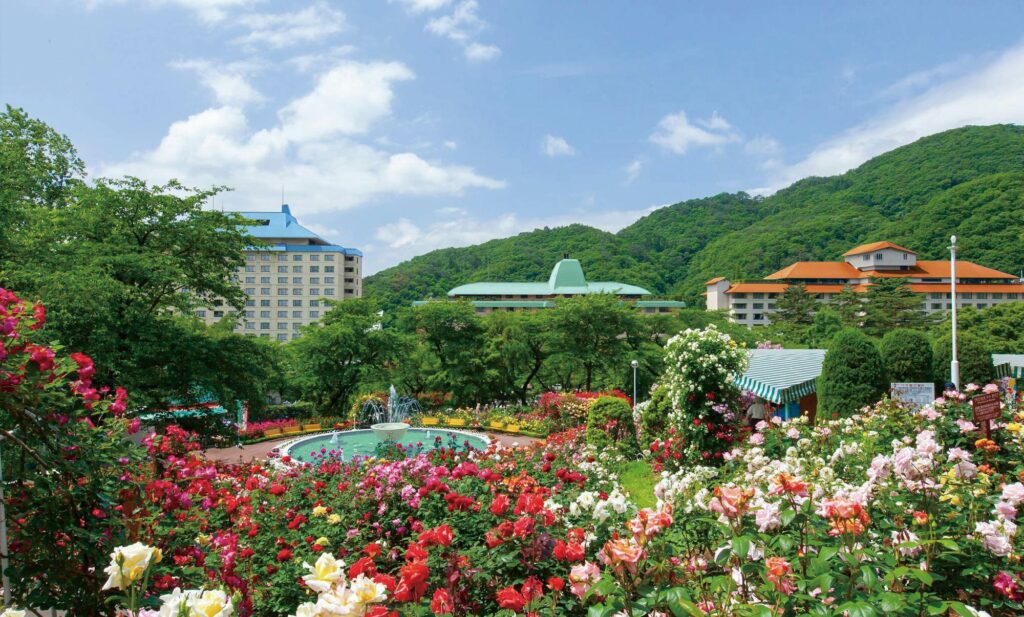
Image credit: Hanamaki Tourism Association
Each of the Hanamaki 12 Hot Springs offer an assortment of accommodation and bath facilities so you’ll be spoilt for choice here. The eponymous Hanamaki Onsen is the luxurious grand resort variation of an onsen village and even comes with a rose garden.
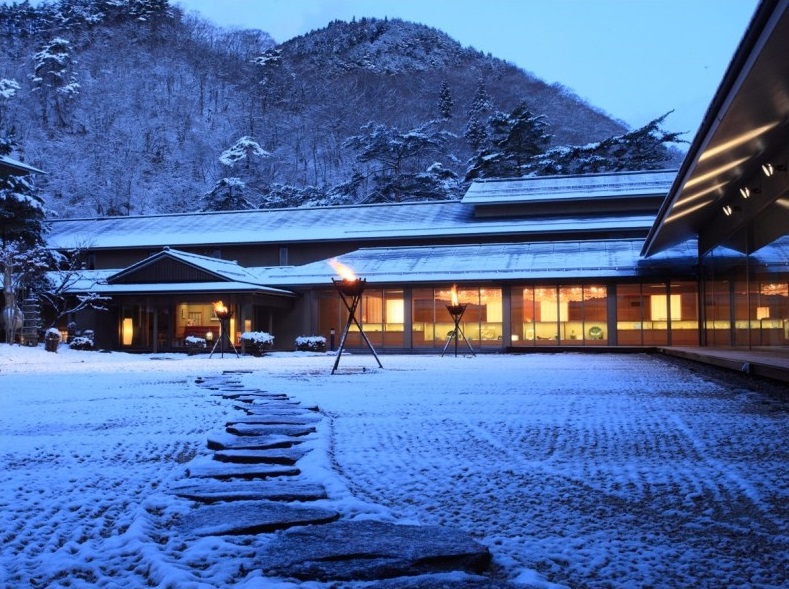
Image credit: @hanamaki_onsen
Come winter, the landscape turns into a world of white. While Hanamaki Onsen boasts the most modern high-rise lodgings, it also hosts Kashoen, a traditional single-storey complex with expansive windows.
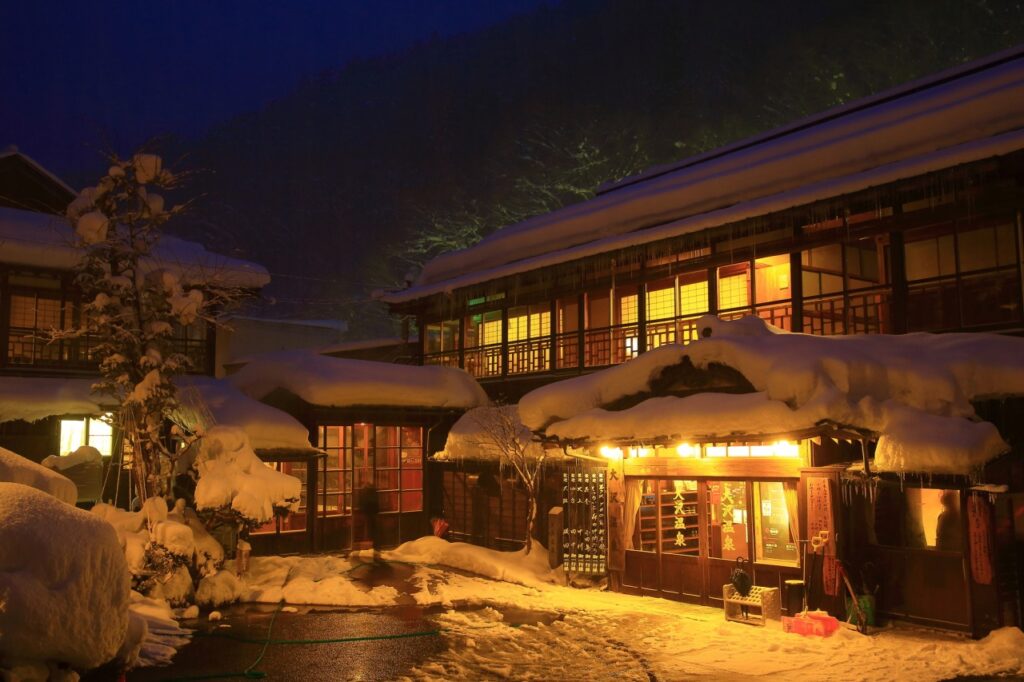
Image credit: Tohoku Tourism Promotion Organization
Osawa Onsen is a dual-concept onsen. It houses Sansuikaku, a modern Japanese-style inn, and Tojiya, a more traditional one.
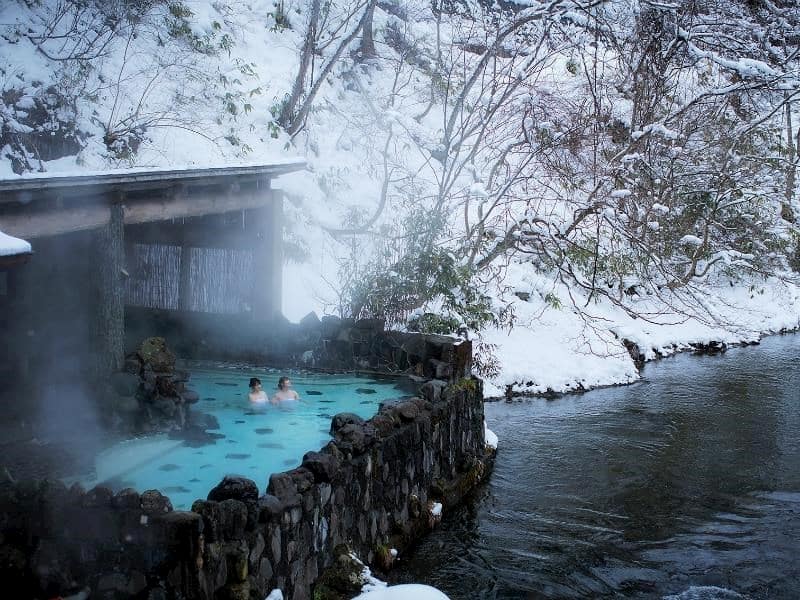
Image credit: SELECTED ONSEN RYOKAN
Osawa Onsen is well-known for its open-air bath that provides front-row seats to the river and the natural elements.

Image adapted from: Shidodaira Onsen Co., Ltd., Shidodaira Onsen Co., Ltd.
Not only does Shidodaira Onsen serve magnificent views right out of one’s private bath, it also serves canine visitors. Dog owners can now revel in the delight of watching their beloved pups splash it out in the Wanwankan.
Visit onsen villages in Tohoku this winter
With winter just around the corner, the numerous onsen villages in Tohoku will soon be transformed into snow-capped living history amidst breathtaking landscapes. A dip in these hot springs will not only soothe your soul, but also take you one level up in your knowledge of Japanese culture.
Also check out:
- 8 outdoor onsen with beautiful fall foliage
- Floating onsen near scenic Lake Togo
- Luxury onsen with Demon Slayer “Infinity Castle”
- 9 urban bathhouses in Tokyo
- Onsen Guide
Cover image adapted from: Japan National Tourism Organization, Zao Onsen Tourism Association, Travel Blog Indonesia, Tohoku Tourism Promotion Organization
